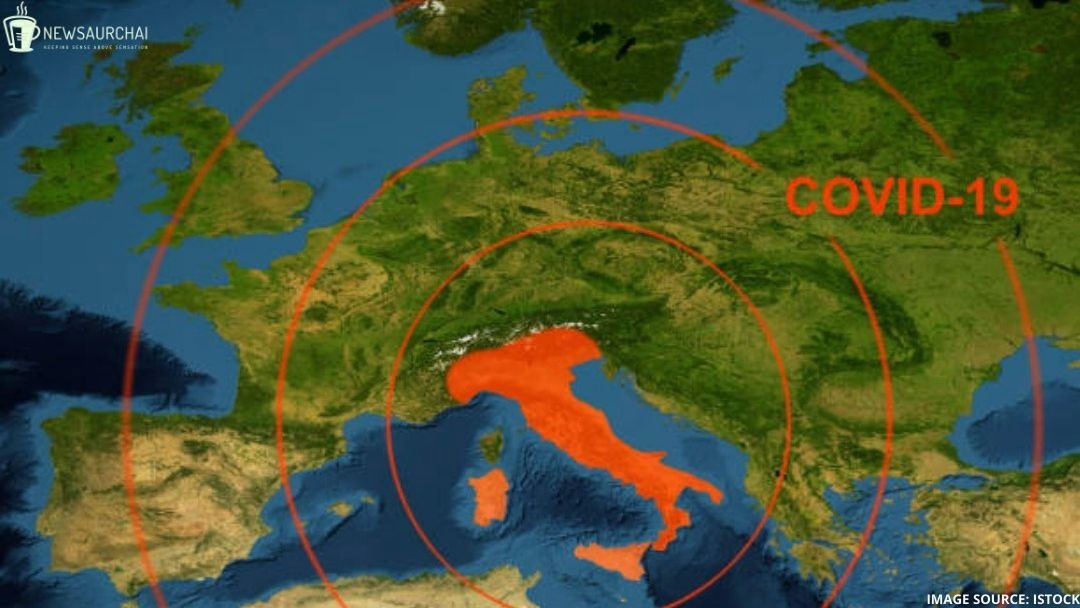
Europe after staying as an epicentre of the pandemic Coronavirus outbreak with the death toll surpassing 10,000 has now step down as the United States saw in the number of infected. Italy, Germany, Spain, France and other European countries reported a steep rise in the infection rates, and the sudden surge in Italy has left China’s death toll behind.
On March 22, 793 new deaths were recorded in Italy, the highest single-day increase in the epidemic. In Spain, the number of cases has accelerated in previously untouched regions, unlike Italy, where 80 per cent of deaths took place in the same three regions. The death of 462 people within 24 hours records the highest daily rise in the country.
Meanwhile, in Germany, the mortality rate remains relatively low despite the pandemic hitting it with full force. The infected cases crossed 43,900, but the death toll is 267, making Germany the country with the lowest mortality rate among the 10 worst affected European countries–0.3 per cent compared with 9 per cent in Italy and 4.6 per cent in UK.
The difference between the two countries was that while Italian hospitals were overloaded with patients, Germany’s are not at full capacity yet. Moreover, Germany began professional contact tracing in initial stages and even tested people with milder symptoms to get an accurate picture of the spread.
As of March 23, the Regional Health Agency recorded 6211 infected cases in Île-de-France. Paris and Île-de-France count the most infected people in France.
The massive surge in the severity of the pandemic in Italy reflects the necessity to isolate coronavirus infected and limit the people’s movement without wasting time and strictly following these instructions.
On February 27, there were around 400 cases and double-digit deaths in the country. However, the leader of the governing Democratic Party urged people not to change their habits. Just ten days later, the infection toll reached 5,883 with 233 dead.
Negligence from the government has brought Italy in the juncture where there are 80,589 recorded cases and 8,215 deaths. Army has been deployed, lockdown enforced, outdoor activities banned, factories shut, production stalled, major economic sacrifice to contain the virus, but the measures came in too late.
Bodies have piled up in churches, especially in northern Lombardy, the centre of the outbreak. Though Italy has adopted some of the strictest measures in the world now, the authorities failed to impose those at a crucial time when they were busy preserving civil liberties and economy. Italy lagged behind the lethal trajectory of the virus in taking measures, thereby resulting in the accelerated growth of infection and deaths.
The under-secretary at the Ministry of Health, Sandra Zampa, justified that given the information Italy possessed, they took action accordingly. As Italy was the pioneer European country to contract the virus at the initial stages of infection, much information was unavailable.
Although Italian officials argue that they acted promptly according to the advice given by scientists and took bold measures in comparison to its European counterparts with competence, the government’s actions would show multiple critical missteps, if traced. In the initial days of virus infection, PM Giuseppe Conte played down the threat, emphasizing on the normal flow of life, thus creating confusion and a false sense of security among the people who went on with their daily chores, helping the virus to spread.
Massimo Galli, a doctor at Milan, explained the emergency deteriorated in the last month as Italy focused on testing people showing severe symptoms in areas with high epidemic intensity rather than opting for a broader approach. Even after considering nationwide lockdown, the government failed to convey the impact of the threat competently and couldn’t persuade Italians to abide by restrictive measures.
As per Ms Zampa, their major fault was viewing China‘s condition like a “science fiction movie” that had nothing to do with them, and Europe is retracing their steps in viewing the virus explosion in Italy in the same light.
Spanish PM Pedro Sanchez warned the country about the worst scenario that is yet to come. Compared to the figures as on March 20, the infected cases surged by 25 per cent and the death toll increased by 32 per cent on March 21 in Spain. He also acknowledged that unlike some Asian countries, western societies were not prepared to counter the pandemic.
Spain is now the world’s 4th largest coronavirus affected country, second to Italy in Europe. Lack of planning, unprepared healthcare system, inadequate tests, political instability, late-night culture can be held responsible. Negligence of the PM who allowed large gatherings at soccer matches and political rallies added to the cause. The shutting down measures came way too late.
The Coronavirus infection takes up to 14 days to show symptoms. During that incubation period, asymptomatic patients can be potential transmitters. This “stealth transmission” has caused the rapid spread of the outbreak, infecting communities that were unaware until they started to show symptoms and got tested.





